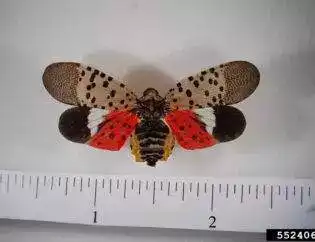
Trees that shed their leaves annually, or deciduous trees enter a dormant state during fall or winter to help them survive the lower temperatures and the lack of water caused by icing and frost. This is a very good time for winter pruning, also called dormant tree pruning and 90% of the pruning can be done during this time.
The deciduous trees are still alive during winter dormancy. However, with the exception of some root growth when soil temperatures are favorable, the rest of the tree conserves energy by stopping growth and generally waiting out for the cold season to pass.
To put things in contrast, evergreen can conserve water a lot better and never fully enter dormancy. For that reason, evergreens should be pruned during growth season and not during winter.
What Is Winter Pruning
Winter pruning is the process of removing branches, parts of a branch or stems of a deciduous tree during the cold season when the plan is dormant. Properly done dormant tree pruning encourages growth, can shape the plants at the beginning of their lifecycle and can also improve the overall health of the tree.
When Does The Dormant Season Begin In Chicago
Trees enter dormancy after they drop their leaves to conserve water and stop growth during the cold season. Generally, in the Chicago area, trees drop their leaves in mid-October, with some tree species such as oaks and beeches keeping their leaves for a little bit longer.

Other factors that trigger dormancy are shorter days/longer nights, the amount of rainfall and a drop in soil temperature.
Long, warm autumns are not necessarily good for the plants, since they can grow new leaves and stems that will be killed by a sudden freeze.
When Does The Dormant Season End
There is no exact date when trees stop being dormant in the Chicago area. To complicate things, Chicago weather is very capricious and might put plants back in eco-dormancy, or dormancy during the time when a plant is ready for growth, but the temperature is still not high enough.
The trees keep track of chilling units, or the number of hours when the temperature is above freezing, with temperatures between 40 to 50 F encouraging the plant to exit dormancy the most.
How Tree Dormancy Works
One of the most important reasons for a tree entering dormancy is water management during freezing temperatures.
There are 2 main ways how trees manage water during winter and each one comes with advantages and disadvantages.
The tree keeps water inside their cells, but lowers the freezing point of the water by mixing it with various minerals or hormones. This process, also called supercooling, has the disadvantage of not being to able to withstand very cold temperatures. Even if the freezing point has been lowered, it is sometimes not low enough.
Some trees push water and liquids to the space in-between cells, allowing the water to freeze without damaging those cells. This process also has its own disadvantages, mainly because the tree may become dehydrated.
Winter Pruning Advantages
There are quite a few advantages to winter pruning, and that is why experts recommend the vast majority of pruning to be done during this time.
Sap Activity Changes During Freezing Temperatures
Because of the way how the trees manage water during the winter, new cuts will not ‘bleed’ as much.
The Tree Is More Likely To Increase Its Health
Because of the low temperatures, certain tree diseases and insects that act as pests are less active. Fresh cuts are more likely to attract tree diseases and insects, but not when it is cold outside.
There Is Less Shock To The Tree
Because the tree is dormant, it is not exposed to as much stress as pruning outside dormancy.
You Can More Easily Inspect The Tree
With the foliage out of the way, it is easier to see a lot of details such as:
- If the tree has any structural issues
- Identifying dead or diseased areas of the tree and removing them to improve health
- Pruning outside of growth season can prevent the sprouting of weaker shoots and promote stronger growth during spring
- Winter pruning help to easily identify potentially competing parts of the tree or branches that might represent a safety risk. These parts can be strategically removed by a trained arborist
You Can Fertilize The Tree At The Same Time
Fertilizing the tree during dormant season benefits the roots as opposed to growing weak shoots.
Dormant Tree Pruning Techniques
There are a few pruning techniques. Some are good and some are bad for the tree (such as tree topping).
Any pruning work should be done with a purpose in mind:
- Safety
- Tree health
- Space management (such as trees that are too close to power lines)
- Disease management
- Pest control
- Air flow
- Getting more sunlight
- Making sure the tree does not compete with other plants
- Shaping the tree
During winter, there are two main strategies you can use to prune dormant trees.
Thinning
It is the process of cutting of a whole branch all the way to the main trunk or to its parent branch. It is used for disease and pest control, or to direct light and improve air flow.
Heading Back
It is the process of removing just part of a branch. There can be no stub left after heading back a branch, because it might rot and attract a host of diseases and insects. To ensure there is no stub left, the branch has to be cut all the way to the next extending side branch or to the next bud.
Winter Pruning Services
So, should you prune your trees exclusively during winter? Not exactly. There are a lot of good reasons to prune trees during spring and summer:
- Some species should be pruned in spring, after they are done blooming
- To increase safety – some pruning cannot wait such as when the tree poses a safety risk to you and your property
- Some minimal pruning to increase the beauty of the tree
- To remove overhanging branches or to make room for something else
As you can see, there are a lot of factors that you have to take into consideration during a winter tree pruning project. The decisions you make will affect the overall health of the tree, it’s structural integrity and the way it will grow in the future. Trees increase your property’s value and healthy trees pose a much lower risk to its safety. That is why it is always a good idea to contact a certified arborist for dormant tree pruning services.










You must be logged in to post a comment.